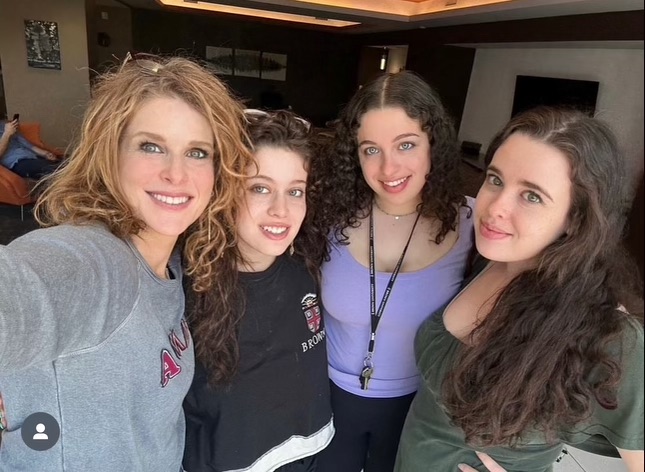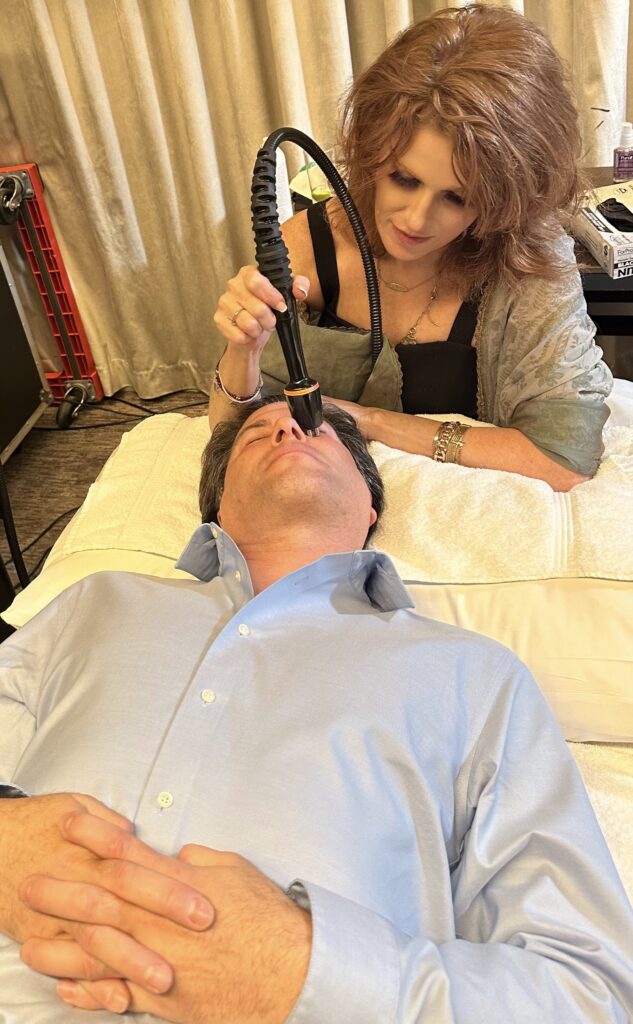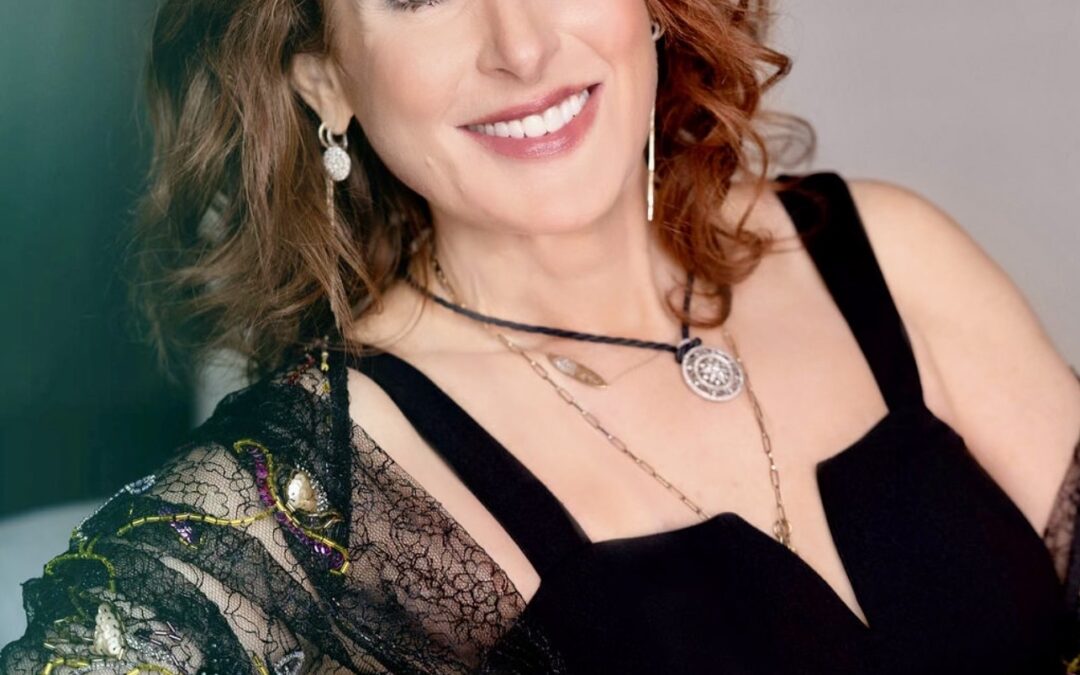photography by Vanessa Corral Photography
reprinted from DOWNTOWN Summer 2024
Dermatologist Dr. Amy B. Lewis, of Lewis & Associates, has been in practice in New York City for more than 20 years, after completing her fellowship at Yale. She initially worked with Dr. Ellen Gendler in New York City and also performed Mohs reconstructive surgery in Long Island, before she started her practice in New York City. She worked with the renowned Dr. Tina Alster at the Washington Institute of Dermatological Laser Surgery. This presented her with a choice between moving to D.C. or staying in New York City. She ultimately chose to run her practice in New York City, and raise three beautiful children.

Dr. Lewis with her three daughters.
When it comes to Dr. Lewis’s approach to cosmetic dermatology, she applies her surgical knowledge and understanding of facial anatomy to her aesthetic treatments, focusing on shaping the face and restoring natural-looking results, advocating for a‘refreshed look,’ rather than simply eliminating lines. Today, we spoke with Dr. Lewis to get a little more insight into her training, her approach to her practice, and some of the latest procedures.
DTM: Can you please share with us your background and upbringing?
Dr. Lewis: I grew up in the suburbs of Philadelphia, with two brothers and a sister. During my time at Penn for my under-graduate studies, I always had a passion for helping people. I vividly remember a moment when I was around 14 or 15 years old, at a roller skating rink, where someone got hurt and I felt the strong desire to be able to assist and understand the human body to make it better. It was then that I expressed to my mommy aspiration to become a doctor someday. Being the first in my immediate and extended family to pursue higher education, let alone medical school, was a significant milestone. Neither of my parents attended college due to their immigrant backgrounds, so the idea of higher education was foreign to them. I enrolled at the University of Pennsylvania in Philadelphia, initially following a pre-med protocol.
DTM:You mentioned that your parents or grandparents were immigrants. Can you tell us more about them?
DL: Yes, my father’s parents immigrated from Russia and ran a grocery store. My dad attended college for a few years but had to drop out to take over the store when his father fell ill. On the other hand, my mother’s parents are from Kyiv, which was part of the SSR at that time.
DTM: Your achievements must make your family very proud. Graduating from university, pursuing graduate school, and then attending medical school is quite remarkable. Was it challenging to get into Yale Medical School?
DL:I have always been a diligent student and performed well at the University of Pennsylvania. Yale sought self-motivated students and evaluated contributions and overall performance. Half of my class consisted of individuals who had pursued other careers or had real-world experience before returning to medical school. The competition to get into Yale Medical School is intense. I have maintained connections with many of my class-mates, and it is awe-inspiring to see their accomplishments in the field of medicine. They are truly the best of the best. I am grateful for the friendships and connections I have made along this journey, and I am proud of my roots.
DTM: When did you decide to specialize in dermatology?
DL: The decision to specialize in dermatology did not come immediately. When I entered medical school, I was still exploring various specialties through electives. However, my inclination towards dermatology grew as I realized my visual acuity and passion for organic chemistry, which allowed me to envision concepts. Dermatology, being a visually-oriented field, appealed to me. Additionally, I had always been skilled with my hands and enjoyed performing interventional procedures. Initially, my focus was more on the interventional and surgical aspects of dermatology, as cosmetic dermatology was not yet established.
I completed a fellowship in Mohs Microscopic Surgery at Yale, which coincided with the emergence of cosmetic dermatology and the use of lasers. It was during my fellowship that I became enamored with the burgeoning field of cosmetic dermatologic surgery, and started pioneering this new avenue. I had the privilege of being mentored by a brilliant talented surgeon, Dr. David Leffell, who had never trained a fellow before. He has since trained many fellows to become successful derm surgeons and our experiences have formed a unique bond. I feel very fortunate to have studied under him. Many individuals who undergo this training tend to focus on Mohs and reconstructive surgery, but I found myself drawn to the creative and artistic aspects of cosmetic dermatology.

Dr. Lewis works on one of her patients.
I immersed myself in the world of aesthetic procedures, including Botox, fillers, and various laser treatments. I even joined a laser group and participated in numerous laser studies as they were being developed. Eventually, I made the decision to specialize solely in aesthetic dermatology, relinquishing my involvement in Mohs surgery to dedicate myself fully to my chosen field. In fact, my experience at Yale led me to establish the cosmetic clinic there in 2006, as there was a need for such a facility. I continue to teach residents and dermatology fellows at the clinic, and it has grown to include other cosmetic dermatologists who contribute to its ongoing success.”
DTM:What is going on in cosmetic dermatology today, in terms of using lasers?
DL: When it comes to lasers, it is important to consider the individual’s ethnicity and skin color. Different skin types require different wavelengths of light to ensure safe and effective treatment. Lighter skin complexions, such as pale skin that burns easily, can typically use almost any laser. However, for individuals with darker skin tones, particularly those classified as skin type four and above, caution must be exercised in selecting the appropriate laser to avoid potential side effects like pigmentation loss or darkening.
DTM: What about frequency of use?
DL: In terms of the number of procedures needed to see results for a neck lift using lasers, it varies depending on the specific laser being used. Some lasers may require only one treatment session, while others may require multiple sessions. The down-time associated with each laser treatment also varies. The field of laser treatments is constantly evolving as more knowledge is gained about how to use different lasers effectively and safely, taking into account the muscles and areas where treatment can be performed.
DTM: What is the current state of cosmetic procedures for fat reduction, and fillers?
DL: The use of fat injections for cosmetic purposes has evolved over time. In the past, fat transfer was commonly used because there were limited options for fillers. However, advancements in dermal fillers have provided a wider range of choices with different thicknesses and durations. Fillers such as hyaluronic acid derivatives, bio-stimulators like Radiesse and Sculptra, and long-lasting fillers like Belafil are now available. Additionally, platelet-rich plasma (PRP) derived from a person’s own blood can be used as a natural filler. PRP can stimulate collagen formation and has applications in hair growth, arthritis, and skin rejuvenation. Regarding PRP, its longevity compared to injectables can vary. While it may take more injections to achieve the desired volume, PRP can sometimes last longer. However, injectables are generally more popular than PRP, which is commonly used for scalp treatments.
Lewis Dermatology & Associates, 120 E. 75th Street, 212-288-6133, amyblewismd.com DTM

